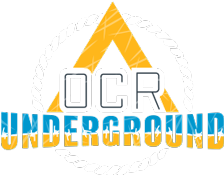Off Season Training For The OCR Athlete
Whether you view yourself as an elite level OCR athlete or just doing it for recreation, I believe your training plan should be very similar. Sure it will be to different degrees based on your goals, but the general outlines are going to be the same.
If you look at any sport out there, you will see that athletes who want to maximize their training follow a seasonal training plan. Put simply, they don’t train exactly the same year round. They have specific training goals for when they are in their off season and specific goals when they are in season.
If you are looking to see significant improvements from your training, you should be looking at it the same way. Participating in OCR is a sport and your training plan should reflect that.
The hard part is defining your seasons. Races go on all year long so it may seem like there is no time for an off season. You always need to be ready to go. While this may be true for many, you training plan can still have different seasons, even if you are racing all year long.
The mistake that most make is they train all out all the time and really just get stuck in a plateau. They may have some success with their performance, but imagine how much better it could be if there was a better plan behind the training.
The best athletes in the world have a yearly plan for their training and you should too. There are different ways to set up your calendar, but here is a simple recommendation that I would start with.
First decide what your A race is. What is the one race on the calendar that you want to have the best results? You may have a couple, but really you should have 1-2 A races each year. You will have other races, but to help with your training plan this is the easiest way to look at it.
Once you have decided on your A race we can work backwards. You can plan on a 4-6 month in season plan and the rest of the year can be considered your off season. B races can still be competitive but your training will always reflect your A race.
This can be confusing, but let’s use an example. Let’s say your A race is to run the Beast at Tahoe in September. But you also want to run competitively in a Super in August. So if we look at your running program what would it look like in July? With Tahoe being the A race our program will be based off of peaking for that event and that distance. So training the 4-6 months prior will all be based on that.
You can still race that Super or any other distance before then, but you won’t alter your training plan for those races. So in this example you would still be good to go for the August race, but you might be hitting higher mileage in your training than if you were specifically training for a Super.
Using this example we can start to see how the training calendar might look. If our race is in September, than let’s say we consider April- September our In Season portion of the year and October-March will be our off season. Now that it is split up we can look at training for specific things in each phase.
I think many already have an idea of their in training planning. But if you are new to the idea of off season training plans, you might want to check out this webinar I did with Registered Dietitian Anne L’Heureux on how we plan for the off season in terms of training and nutrition.

